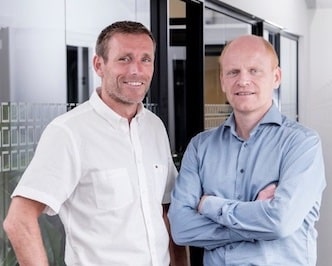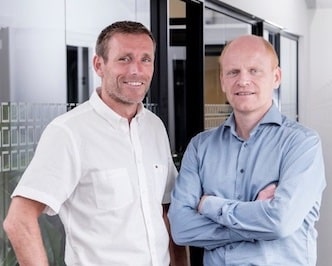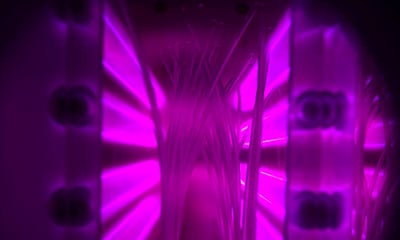Adhesion and Surface Treatment of Plastic
Surface treatment of plastic is not an uncommon procedure in the industrial world. Innumerable plastics are treated each and every day for improved wettability leading to proper adhesion of paints, inks, coats etc.
Although, the problem of attaining good quality adhesion of coatings, glues, sealants and paints as compared to other conventionally difficult to bond materials e.g. propylene has confronted engineers since the 1950’s where it all began.
Overcoming adhesion challenges in low surface energy plastics
Adhesion problem is common in materials that possess low surface energies. Examples can include High-Density Polyethylene, Polypropylene, EPDM, and Polyethylene etc. With the surface energy ranging anywhere from 29 to 36 Dyne/cm or mN/m (milinewton per meter). Obtaining a level of adhesion on any materials with low surface energy i.e. Polypropylene or Polyethylene etc. can sometimes become extremely difficult because of their slickness. Thus, this adhesion problem leads to the printed ink rubbing off, coatings or paint not sticking on the surface along with failed gluing and weak sealing.
Bonding polyethylene is challenging due to its low surface energy, which reduces the effectiveness of adhesives. To bond it effectively, surface treatment methods like plasma or corona treatment are used to increase its surface energy. This enhances adhesion, allowing glues, paints, or coatings to bond securely to the polyethylene surface.

Tantec produces several solutions for plastic surface treatment. Please refer to
our list of products: plasma treaters and corona treaters.
Should you have further questions, do not hesitate, our
specialists are here to help: [email protected]
Industries dealing with medical devices or automotives are generally subject to the adhesion problem as many others that coat plastics, print on them or apply bonding techniques. And due to the increased use of Polyolefin, surface treatment of plastic is becoming more and more difficult. Normally, polyolefin has a non-polar surface or low surface energy which is unresponsive to printing, bonding, coating or painting etc. unless you’re willing to apply treatments that are damaging to the environment and require a lot of effort.

Solving your adhesion problems
We have more than 50 years of experience in delivering and manufacturing quality, high-end surface treatment products for any industry.
Tantec has both standard machines, but also custom-designed machines.
Contact us today and get a quote. We are standing by to service you.
Solving your adhesion problems
We have more than 50 years of experience in delivering and manufacturing quality, high-end surface treatment products for any industry.
Tantec has both standard machines, but also custom-designed machines.
Contact us today and get a quote. We are standing by to service you.


Solving your adhesion problems
We have more than 50 years of experience in delivering and manufacturing quality, high-end surface treatment products for any industry.
Tantec has both standard machines, but also custom-designed machines.
Contact us today and get a quote. We are standing by to service you.
RotoTEC-X – plastic treater
Our RotoTEC-X product for example, offers a cost-effective method, of treating plastic materials. It is an example of a machine which treats plastic materials such as PP, PE, PEEK, ABS, PC, PS and others. Click here to see the machine.
Surface tension and the comparative surface energy of a material determine the potency of a bond existing between a coating and the material itself. If a solid possesses high levels of surface energy as compared to the surface tension of a liquid, there will be increased molecular attraction drawing closer together the adhesive and the ink or paint etc resulting in superior bond strength. Similarly, if the solid’s surface tension is lower than that of the liquid, then the attractive forces will weaken thus, resulting in repelling of the coat.
During the surface treatment of plastic, producers are often challenged with the task of increasing the surface’s energy level making it greater than the surface tension of the coating, printing ink, and paint or adhesive so as to increase the chemical attraction. This results in proper adhesion due to improved wettability of the surface. Generally, a substrate’s surface energy should range at least 5 mN/m (dyn/cm) above the surface tension of the adhesive, paint, coating or ink to be used on the surface.

Improving Adhesion and Corona treatment for plastics
Ideally, a surface to be bonded should be dust free, wettable i.e. high surface energy, clean, smooth, dry and non-porous. There are numerous methods available for increasing the polarity and surface energy of plastics. These include treatments involving high temperature, wet chemicals, etc. which are not so friendly for the environment. Other methods consist of treating the plastic surface to a high voltage corona and plasma surface activation which is friendlier towards the environment than wet chemicals and high flames.
Video: Tantec RotoTEC-X | Corona Treatment System
FAQ for corona treatment of plastic
What is plastic surface treatment and why is it necessary?
Plastic surface treatment is a process used to modify the surface energy of plastic materials to improve their adhesion properties. Treatments like plasma and corona increase the surface energy of plastics, making them more compatible with paints, coatings, and adhesives. It is necessary because untreated plastic surfaces often have low surface energy, causing poor bonding with these materials. Proper adhesion is critical in many applications to ensure durability and effectiveness, such as in automotive paints, electronic device shells, and medical equipment coatings.
Which industries benefit from using plastic surface treatment solutions
Industries such as automotive, medical devices, electronics, packaging, and cable & pipe typically benefit from plastic surface treatment solutions. In the automotive industry, improved adhesion contributes to more durable paint applications. In medical devices, secure bonding of coatings ensures equipment functionality and patient safety. Electronics require precise coatings and adhesives to protect and function correctly. Packaging relies on treatments to allow printing and sealing, while the cable and pipe industries use it for protective coatings that prevent wear and improve durability.
What are the common methods for surface treatment of plastics?
Common methods include plasma treatment and corona treatment. Plasma treatment involves using ionized gases to increase the surface energy, making the plastic more receptive to adhesives and coatings. Corona treatment uses high-frequency electricity to achieve a similar effect. These methods are more environmentally friendly than traditional methods, which often involve hazardous chemicals or require high energy input due to extreme temperatures. Both methods offer precise and cost-effective solutions for enhancing surface properties.
How does plasma treatment work on plastic surfaces?
Plasma treatment involves subjecting the plastic surface to a stream of ionized gas or “plasma.” This bombardment with energetic particles modifies the surface by increasing its surface energy. The increased energy makes the surface more amenable to bonding with paints, coatings, or adhesives. Plasma treatment is highly effective because it alters only the surface properties without affecting the bulk characteristics of the material, ensuring that the plastic retains its intrinsic properties while becoming more adhesive-friendly.
What challenges are associated with bonding low surface energy plastics like Polypropylene?
Low surface energy plastics like Polypropylene are naturally slick and resist bonding with other substances. This presents a challenge in applications requiring coatings or adhesive bonding, as the materials fail to adhere securely, resulting in peeling or failure. Such issues are prevalent in industries demanding robust and reliable adhesion. Surface treatments elevate the surface energy, neutralizing these limitations and enabling effective bonding of coatings and adhesives, thereby ensuring product integrity and performance.
What materials can be treated with the RotoTEC-X machine?
The RotoTEC-X machine is designed to treat a variety of plastic materials, improving their surface properties for better adhesion. These materials include PP (Polypropylene), PE (Polyethylene), PEEK, ABS, PC, and PS. The machine modifies the surface energy of these plastics, making them suitable for further processing, such as painting, printing, or adhesive application. This versatility makes RotoTEC-X ideal for use in industries requiring flexible production processes and varied surface treatments.
Where can I learn more about plastic surface treatment solutions by Tantec?
For detailed information, you can explore our knowledge base or contact our specialists via email at [email protected] for expert advice and customized solutions.

Solving your adhesion problems
We have more than 50 years of experience in delivering and manufacturing quality, high-end surface treatment products for any industry.
Tantec has both standard machines, but also custom-designed machines.
Contact us today and get a quote. We are standing by to service you.
Solving your adhesion problems
We have more than 50 years of experience in delivering and manufacturing quality, high-end surface treatment products for any industry.
Tantec has both standard machines, but also custom-designed machines.
Contact us today and get a quote. We are standing by to service you.


Solving your adhesion problems
We have more than 50 years of experience in delivering and manufacturing quality, high-end surface treatment products for any industry.
Tantec has both standard machines, but also custom-designed machines.
Contact us today and get a quote. We are standing by to service you.







